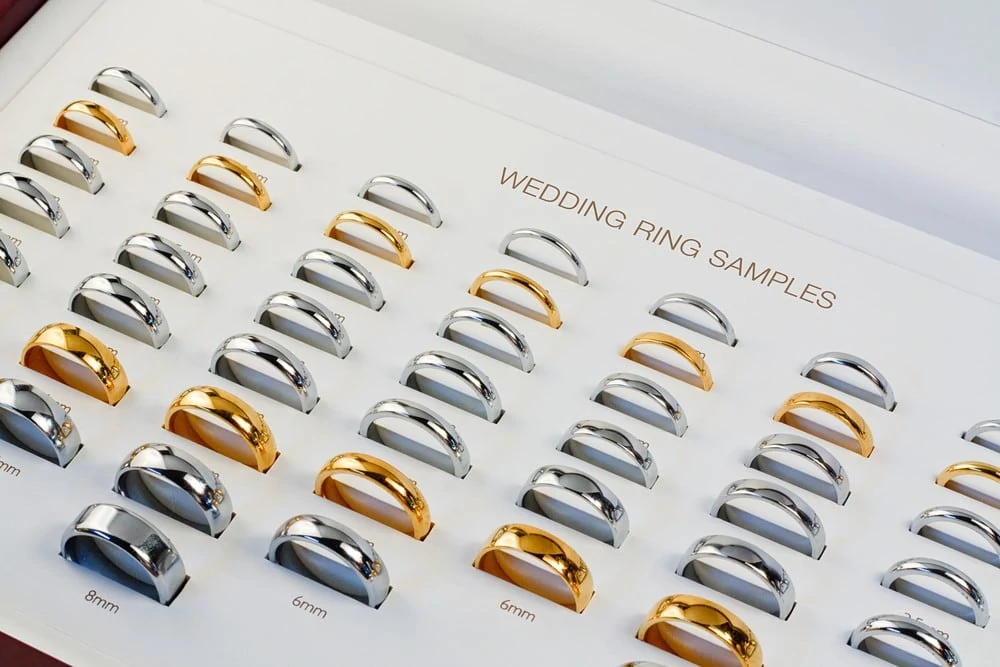
Table of Contents
Ring thickness and ring width are two different aspects of a ring that are often confused as being the same. In reality, while these two terms refer to completely different things and can’t be used interchangeably, there is a correlation between them. Let’s take a look at what ring width and thickness are and how they affect the look and fit of your ring.
What is Ring Thickness vs. Ring Width?
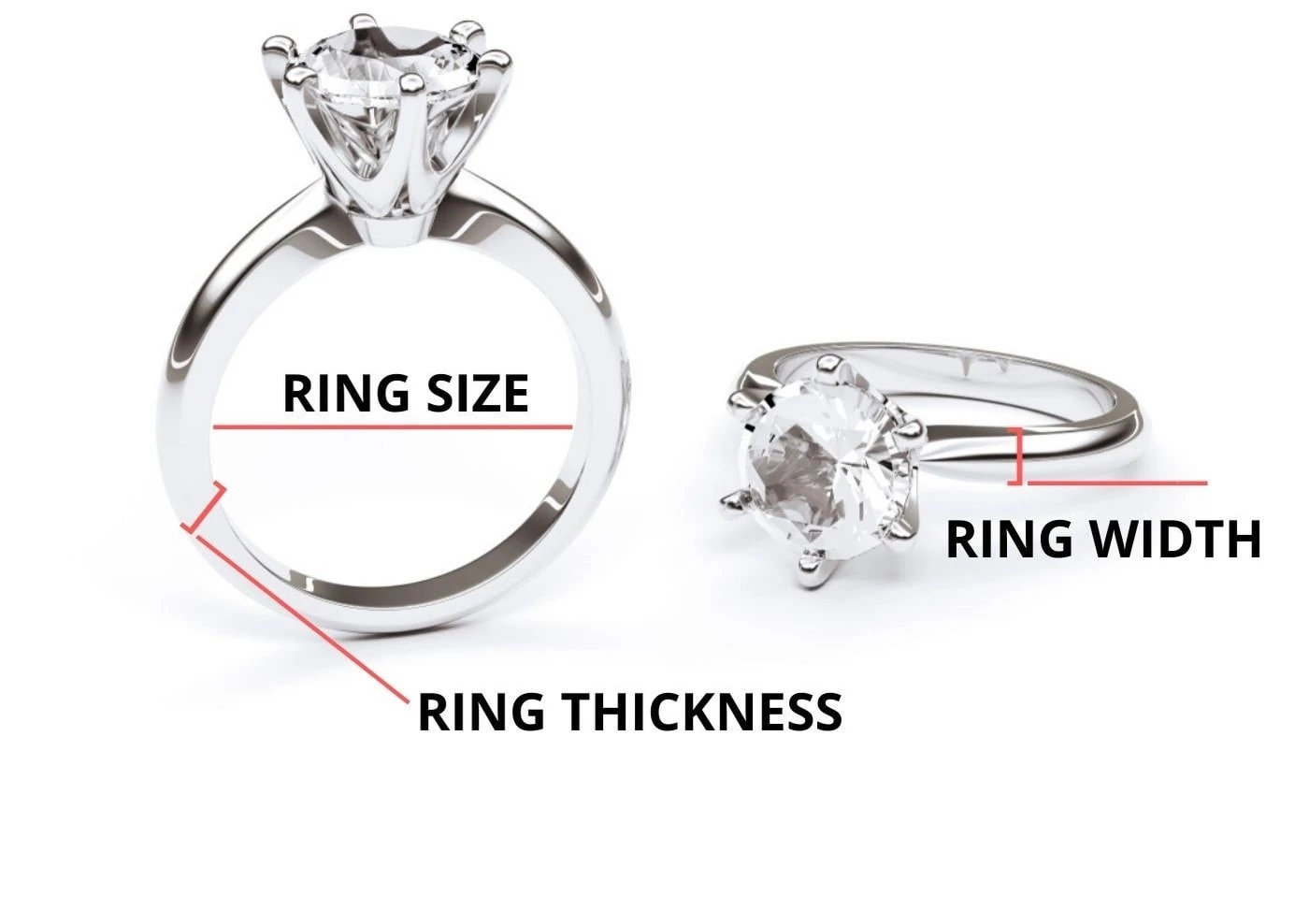
Ring thickness refers to the thickness of the metal when viewed from the side, or the profile, of the ring. It indicates how much metal has been used in crafting the ring.
Ring width refers to how wide the metal of the ring is and can be seen when the ring is worn on your finger. There are standard ring widths, ranging from 2mm to over 12mm. Some rings can reach upwards of 20mm, depending on your preference and style.
In general, the thickness and width of a ring are about the same for thinner bands, but the wider the band gets, the more the disparity between the thickness and width.
What’s the Best Ring Thickness and Width?
There’s no standard ‘best’ thickness or width for a ring, and the option you choose largely depends on your specific preferences and tastes. However, these are important factors to consider because they can affect the comfort and appearance of your ring.
How to Choose Ring Width
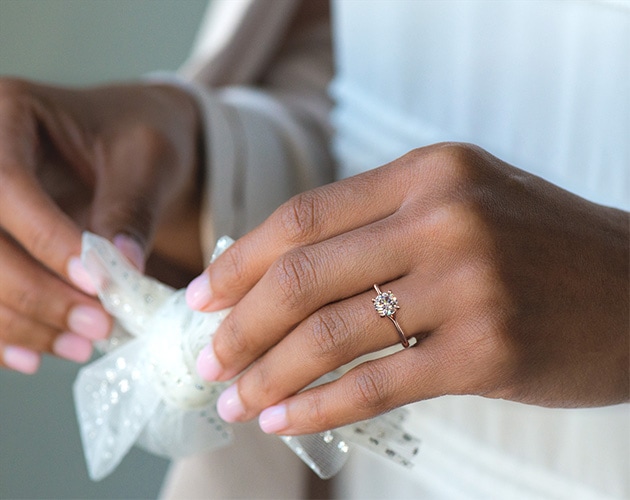
In general, people gravitate towards narrow bands which are more comfortable to wear and easier to put on and take off. The most common ring widths for women are between 2.0mm to 4.0mm, while for men it can range from 4.0mm to 6.0mm. Remember that these are just the most common sizes, note necessarily the ‘best’ widths.
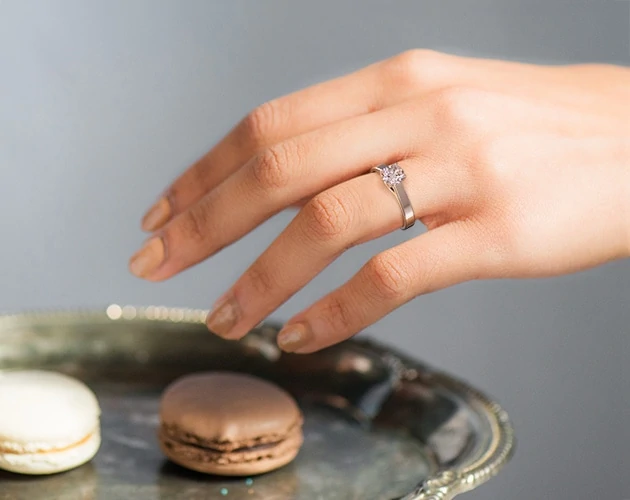
Wider bands are perfect for a more out-there look. They also don’t tend to spin on your finger or droop forward, as thinner bands sometimes do. In addition, some people like the more solid feel of a wider band and some believe that it’s more comfortable to wear as it doesn’t pressure the finger in a single tight spot. However, they can be difficult to put on and take off and feel stiffer on your finger.
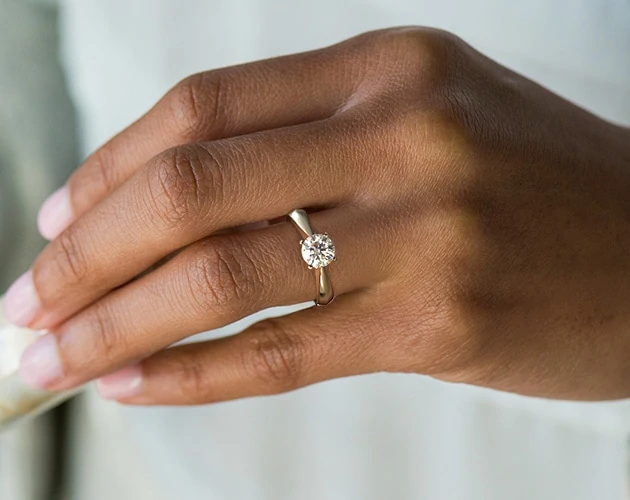
Some designs incorporate a combination of wide and narrow by having the band taper as it nears the center stone. This results in an elegant-looking band, that can also make the stone look larger.
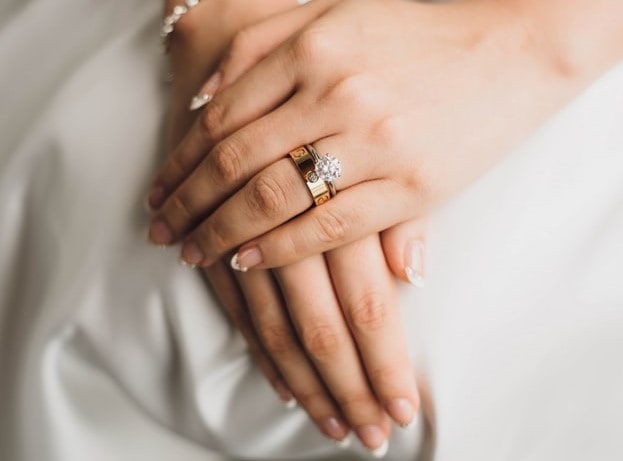
If you’re wearing an all in one engagement and wedding ring, it’s a good idea to opt for a thicker band that’s easier to see and makes more of a statement. If you’re stacking your engagement and wedding rings, then consider the total width of the bands on your finger and choose a combined width you’re comfortable with.
While most brides go for matching bands, there’s no rule about this. Choose a wide wedding band and a narrow engagement band, or vice versa, if that suits your fancy and taste. Mismatched ring widths can create interesting detail and a unique overall look.
How to Choose Ring Thickness
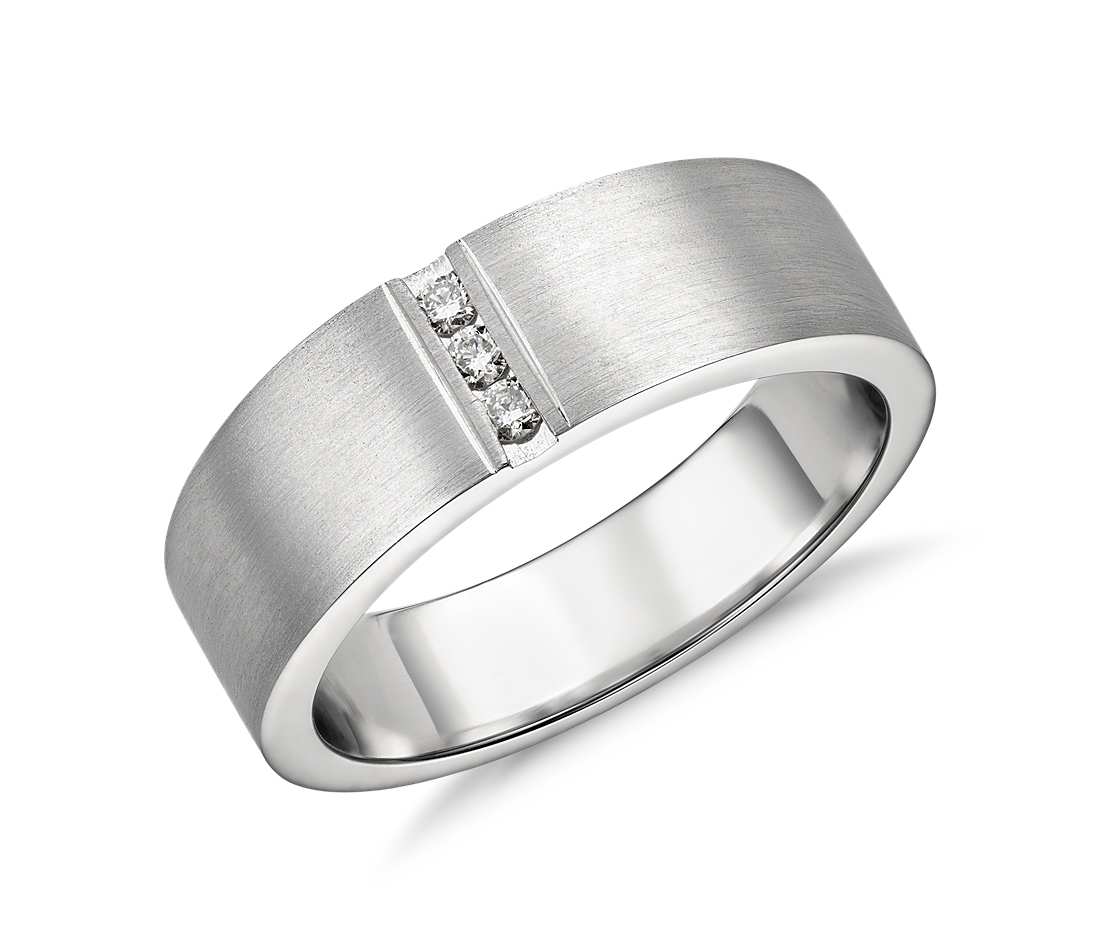
When it comes to thickness, it’s more about durability than appearance because you really can’t see the thickness all that much. Thicker rings tend to be stronger as they use more metal and are less likely to twist or bend out of shape. Most rings are around 1.5mm thick, which is a good enough thickness for daily wear and active hands.
Rings thinner than 1.5mm are still durable, but more likely to bend and change shape over time. They’re also perfect if you like minimum metal between your fingers and don’t like the feel of a thick ring. If you’re wearing two rings on your finger, aim to have them of the same width, to avoid one ring standing up over the other.
Finger Size and Ring Thickness and Width
The size of your fingers and hands is another point to consider when picking out your ring. If you have shorter fingers, a large, thick ring will only make them appear shorter. To give them the illusion of length, pick a thinner band.
If you’ve got long, thin fingers, you can get away with any ring width, but a very thin ring might look lost and unimpressive on your finger. Pick a medium to wider ring for the best look.
What’s the Verdict?
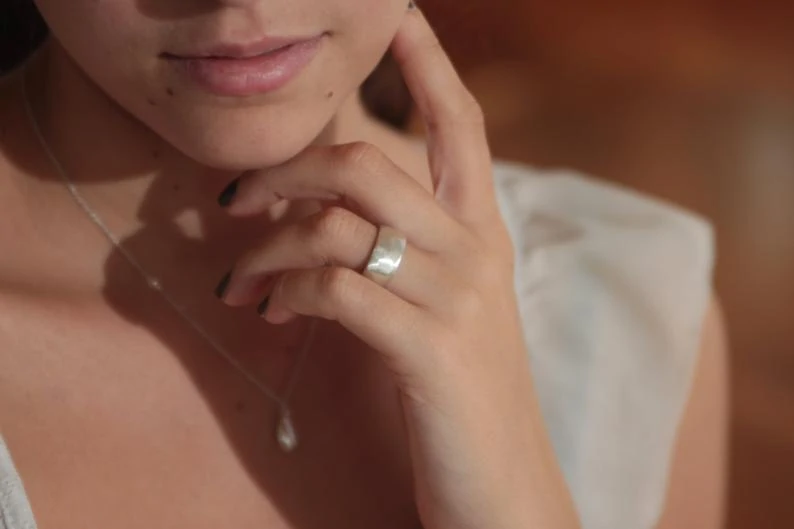
Both ring thickness and width affect how the ring fits on your finger and how it looks. While there are popular sizes often chosen for rings, opt for one that suits your personal taste and comfort.
In general, thinner bands are considered feminine, while thicker bands have a more striking appearance. The thicker the band, the more dramatic and statement-making it becomes. At the moment, there’s a trend towards wearing thicker rings, especially for brides wearing an all-in-one ring. Regardless of the norms and conventions, pick a ring width that feels right to you.
Wrapping Up
Hopefully, this article has cleared up any misunderstandings about these two terms. So to quickly recap, wedding ring thickness and width are two important considerations. Thickness is more about structural integrity, while width has a more significant impact on appearance. Which you choose depends on how comfortable the ring feels to you and whether or not you like how it looks.
Related Articles
How to Pick Your Wedding Ring – A Step-by-Step Guide
6 Wedding Ring Finishes: Pros, Cons, and Differences
Engagement Rings vs. Wedding Rings vs. Wedding Bands – How Are They Different?
The History and Future of the Wedding Ring – A Symbol of Love









